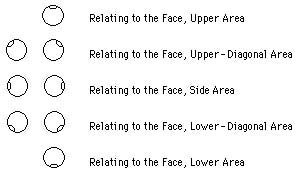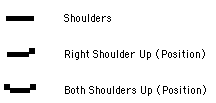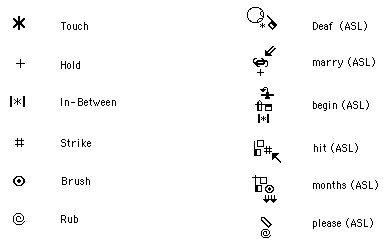|
|
|
|
|
|
|
In Support of Adopting an ASL Writing System Amy Rosenberg Master's Thesis, University of Kansas Department of Linguistics, 1999 |
|||
|
Chapter 5, Part Two
 Location eight is symbolized by a horizontal bar , which actually symbolizes the shoulders. The arm and elbow are symbolized by a line drawn attached to the appropriate SignWriting handshape . The wrist locations are also shown as part of the handshapes in combination with a touch symbol . 
The SignWriting touch symbols include basic contact , strike , grasp , brush , in between contact , and rubbing contact.  The twenty-four movements postulated by Stokoe are also more than accounted for with SignWriting symbols. Observing the Sig symbols in Appendix B, one can write movements thirty-two through thirty-four with double arrows. Thirty-five through forty are written with single arrows. Forty-one, forty-two and forty-three are written with twisted double arrows with one line through them. The nodding action (44) is written with an arrow placed by the face symbol. Forty-five, forty-six and forty seven are written using the finger movement SignWriting symbols. SignWriting uses a small filled in circle (near the handshape) for the finger joint closing, a small empty circle for its opening, a symbol which looks roughly like ^ to symbolize the knuckle opening and that symbol upside-down to symbol the knuckle closing. ^^ symbolizes opening and closing and that symbol on top of itself (in two rows) symbolizes opening and closing in an alternating fashion. Movements forty-eighty through fifty-five are represented by either the arrows, with their stems appropriately shaped to indicate the movement, or the contact symbols mentioned in discussion of location above. See Figure 10.
Stokoe's Movement Phonemes in SignWriting |
Write to the author... Amy Rosenberg
amy_nemiccolo@yahoo.com